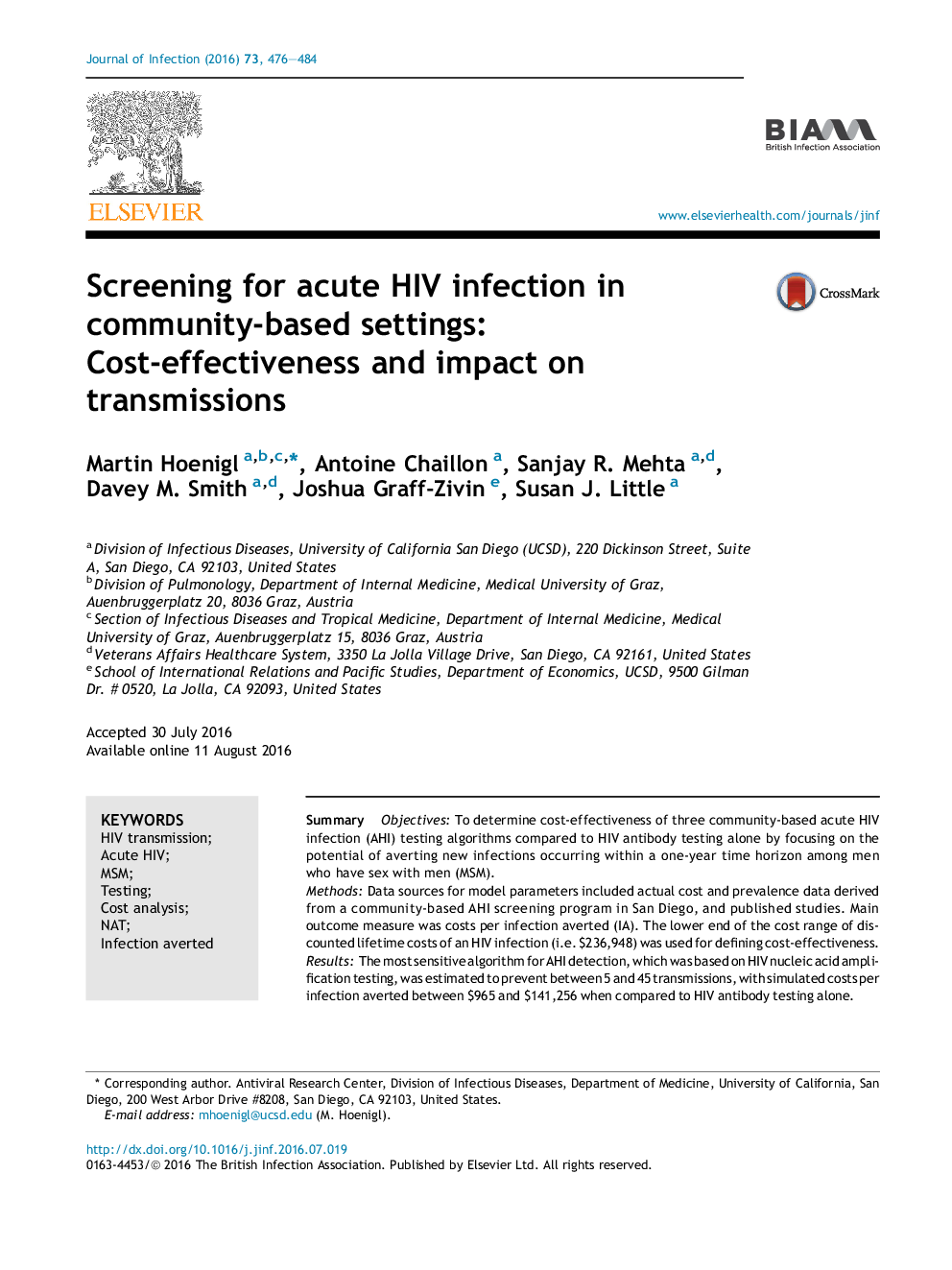| Article ID | Journal | Published Year | Pages | File Type |
|---|---|---|---|---|
| 5668722 | Journal of Infection | 2016 | 9 Pages |
â¢Cost-effectiveness of community-based acute HIV infection (AHI) testing was evaluated.â¢Data sources included actual cost and prevalence data among men who have sex with men in San Diego, and published studies.â¢Community-based AHI testing screening was cost-effective in preventing new HIV infections.â¢Community-based AHI testing prevented between 5 and 45 HIV transmissions, when compred to HIV antibody testing alone.â¢Community-based AHI testing among MSM in the United States may pay for itself over the long run.
SummaryObjectivesTo determine cost-effectiveness of three community-based acute HIV infection (AHI) testing algorithms compared to HIV antibody testing alone by focusing on the potential of averting new infections occurring within a one-year time horizon among men who have sex with men (MSM).MethodsData sources for model parameters included actual cost and prevalence data derived from a community-based AHI screening program in San Diego, and published studies. Main outcome measure was costs per infection averted (IA). The lower end of the cost range of discounted lifetime costs of an HIV infection (i.e. $236,948) was used for defining cost-effectiveness.ResultsThe most sensitive algorithm for AHI detection, which was based on HIV nucleic acid amplification testing, was estimated to prevent between 5 and 45 transmissions, with simulated costs per infection averted between $965 and $141,256 when compared to HIV antibody testing alone.ConclusionAHI testing was cost-effective in preventing new HIV infections among at risk MSM in San Diego, and also among other MSM populations with similar HIV prevalence but lower proportions of AHI diagnoses. These results indicate that community-based AHI testing among MSM in the United States can pay for itself over the long run.
